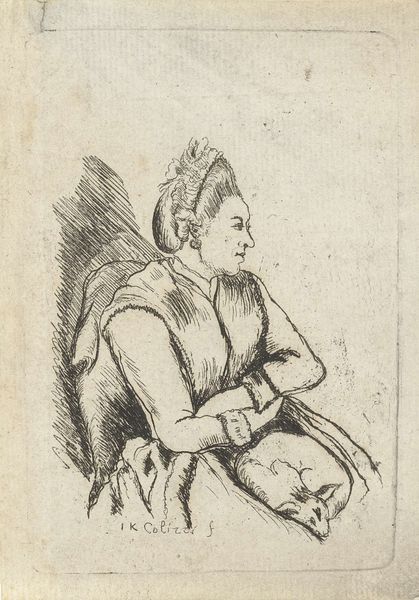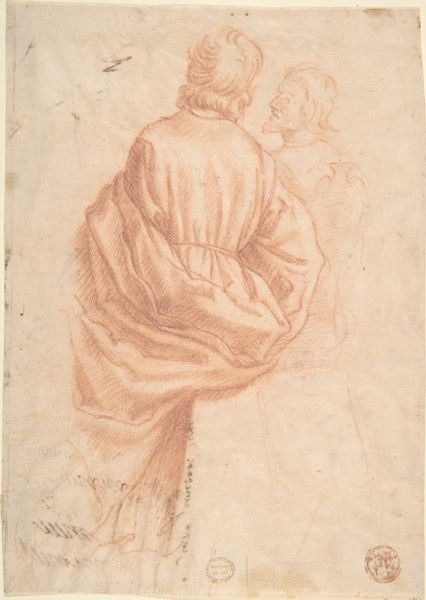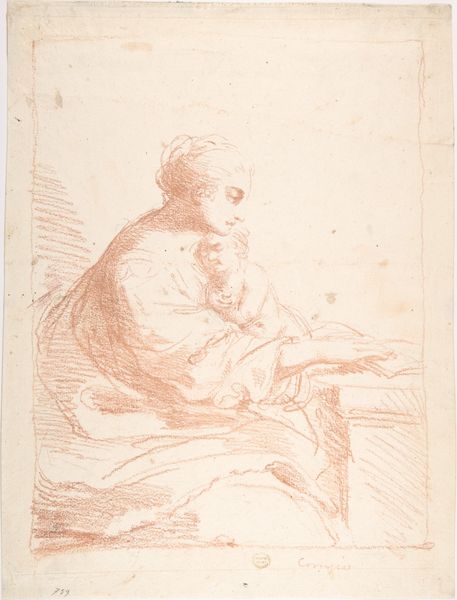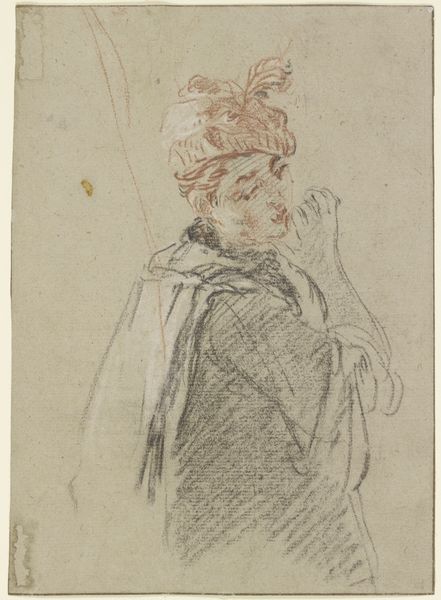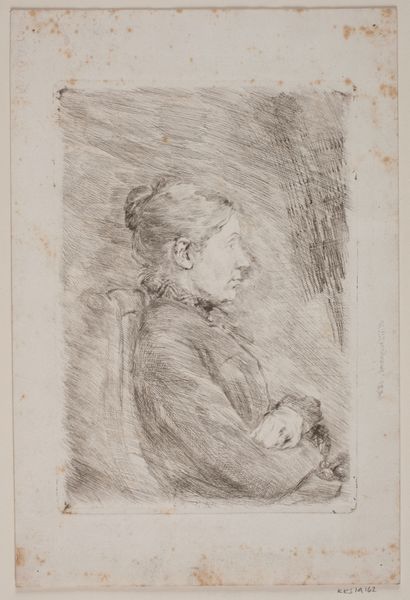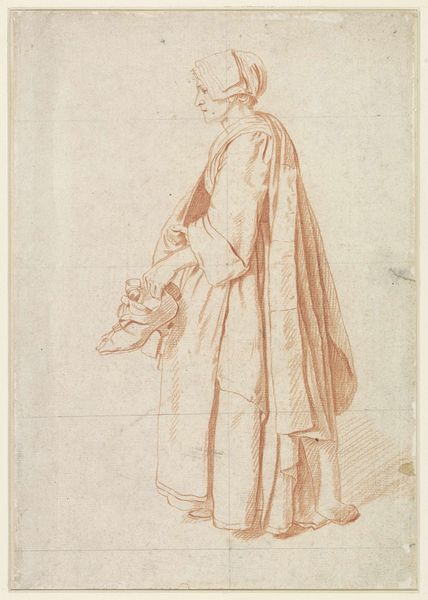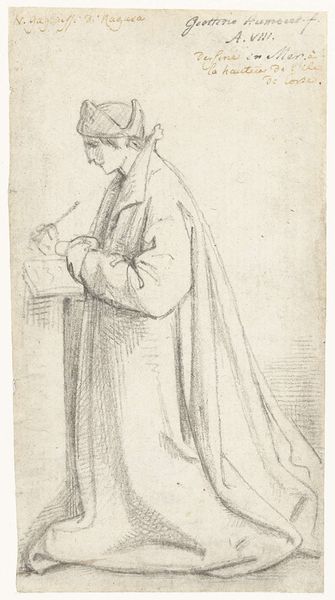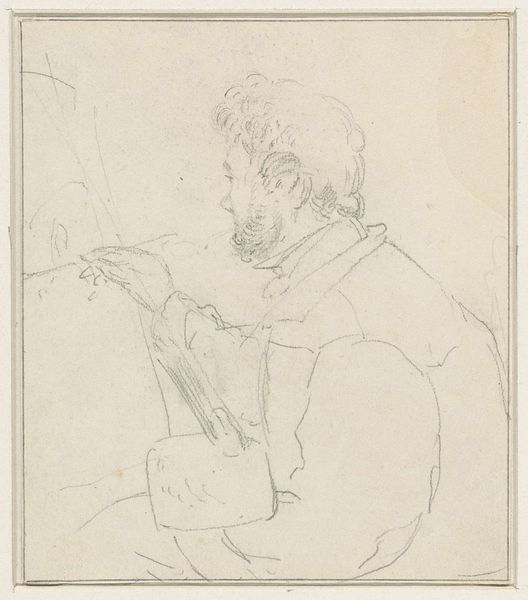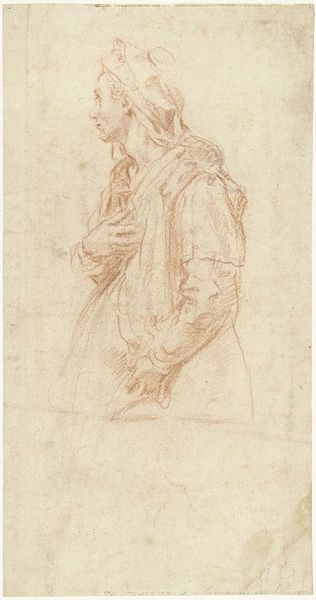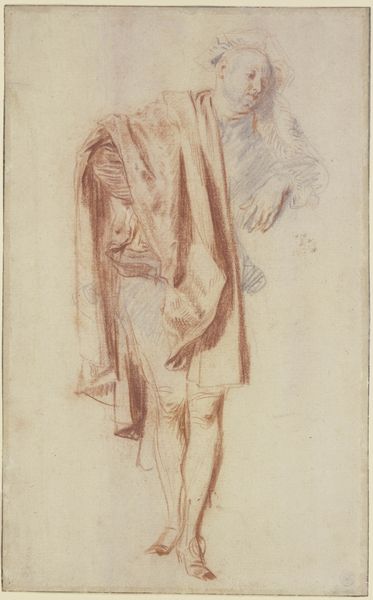
drawing, red-chalk
#
portrait
#
drawing
#
high-renaissance
#
red-chalk
#
figuration
#
11_renaissance
#
13_16th-century
#
sketchbook drawing
#
portrait drawing
#
history-painting
#
academic-art
Copyright: Public Domain
Curator: Here we have “Kneeling, praying boy” by Santi di Tito. This drawing, created in red chalk, offers a glimpse into the artistic practices of the High Renaissance. Editor: My first thought is about its intimate quality. The red chalk gives it a warmth and vulnerability. The kneeling figure, positioned in quiet contemplation, seems lost in thought and perhaps supplication. It makes me wonder what circumstances bring a child to prayer? Curator: Yes, there’s an incredible sense of immediacy, a capture of fleeting sincerity. Red chalk lends itself to precisely this kind of intimate portrayal and was a favorite medium for figure studies during the Renaissance, echoing earlier traditions like sanguine drawings. Editor: It is true the Renaissance saw a real rediscovery of classical forms and a new naturalism. It feels more personal than, say, earlier medieval devotional images. But seeing this vulnerable child reminds me that not all children throughout history have had the same experience of a protected childhood. I imagine social circumstances profoundly affected even their spiritual lives. Curator: Certainly. And di Tito, though working in a later part of the Renaissance, is consciously connecting to that revival of naturalism while adding a layer of emotional realism. The placement of the hands, the set of the shoulders… these aren’t just physical details; they evoke a palpable sense of interiority. Editor: Thinking about the performative aspects of religious observance in that period, it also brings to mind questions about power, piety, and innocence. What would a contemporary child think about seeing an artwork like this today? Curator: A powerful question! Today, we might read different nuances into such an image, colored by contemporary social awareness and different artistic trends. That is an evocative notion – comparing those readings over time and contexts. Editor: Ultimately, I suppose, artworks function like cultural Rorschach tests, provoking introspection about history and our place within it. Thank you for that insight into this quietly emotional Renaissance image. Curator: And thank you for encouraging us to view it with a contemporary perspective and connect it to both past and future discourse.
Comments
No comments
Be the first to comment and join the conversation on the ultimate creative platform.

